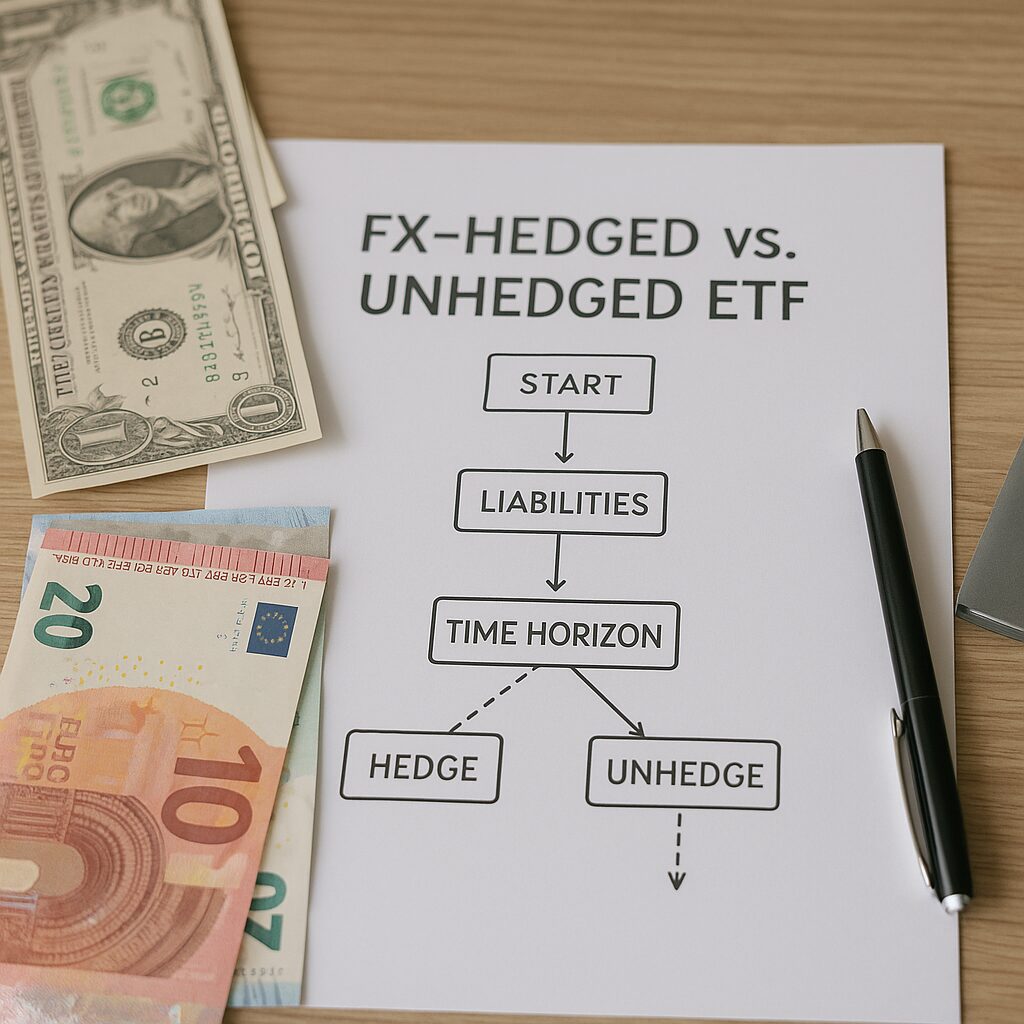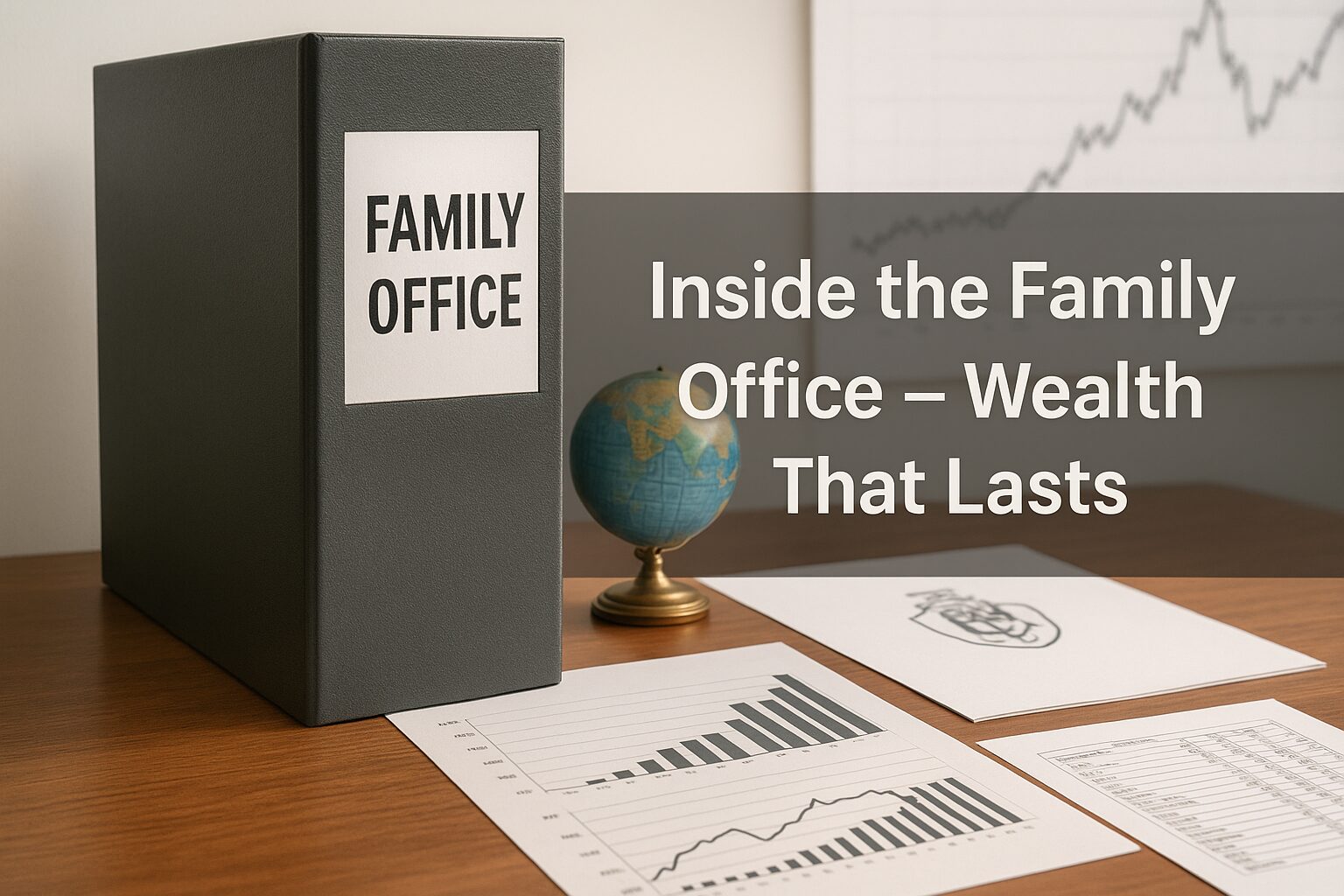ETF Deep Dive: S&P 500 vs. Nasdaq-100 vs. MSCI Emerging (Build a Global Core Without Hidden Risk)
Read this first — how to use this guide
This is a hands-on playbook, not a textbook. You’ll walk away with:
- A repeatable method to pick, size, and maintain a three-ETF global core (S&P 500, Nasdaq-100, MSCI Emerging).
- Copy-paste checklists you can drop into your notes or portfolio tracker.
- Guardrails that keep your account safe when the market isn’t friendly.
- A case library at the end you can scan in minutes whenever you rebalance.
No “general tips,” no fluff. You’ll assemble a core you can hold through thick and thin—then you’ll know exactly what to add, what to avoid, and when to act.
1) What these three ETFs really give you (and what they don’t)
S&P 500 (Large-cap U.S. core)
- Strength: Broad, profitable U.S. businesses across multiple sectors; deep liquidity; low fees; robust shareholder culture (buybacks/dividends).
- Blind spot: Heavier weight in mega-caps during momentum phases can hide concentration; still heavily exposed to the U.S. economic cycle; tech/services share can creep high.
Nasdaq-100 (Mega-cap growth, ex-financials by design)
- Strength: High innovation exposure (software, semis, platforms), faster revenue growth, powerful operating leverage in expansions.
- Blind spot: Business model crowding (similar cash-flow drivers); valuation compression risk; concentration in few names; higher tracking volatility than broad market.
MSCI Emerging Markets (EM)
- Strength: Access to commodity cycles, domestic consumption growth, and value/growth mix outside developed markets; currency diversification.
- Blind spot: Policy risk (capital controls, governance), currency drawdowns, liquidity gaps, index governance changes; country concentration can be severe at times.
Key truth:
These three are complementary only if you size them with intent, monitor overlap, and control FX/country/sector risk. If you “set and forget” blindly, you’ll accidentally build a tech-heavy U.S. bet plus a political-risk sidecar—which is not diversification.
2) Build from the inside out: what’s inside the S&P 500 matters
Don’t treat the S&P 500 as a monolith. Treat it like a basket of sector risk that shifts over time.
What to monitor quarterly (copy-paste):
- Top-10 holdings share of index (concentration gauge)
- Sector weights: information technology, healthcare, financials, communication services, consumer discretionary, industrials, staples, energy, materials, utilities, real estate
- Revenue geography (how global the top constituents actually are)
- Buyback/dividend yield trend (shareholder return engine)
- Valuation mix (growth vs. quality/value balance)
How to use it
- If IT + Communication Services share creeps too high and top-10 weight spikes, your “broad market” is quietly turning into a growth bet.
- Counter-action: either cap your S&P 500 position at a pre-set max, or add a defensive sleeve (you’ll do the sector sleeve in Part 2) to neutralize cyclicality.
Common failure pattern
- Investor assumes S&P 500 = diversified forever → ignores that sector drift changes the behavior of the index → drawdown hits harder than expected.
3) Nasdaq-100: why it compounds—and why it punishes
Why it compounds
- Network effects, recurring revenue, scale economics, and high gross margins. A small improvement in revenue turns into a big jump in free cash flow.
Why it punishes
- When rates rise or growth expectations cool, valuation multiples compress. With heavy weights in a handful of leaders, the index can suffer sharp air-pockets.
- Overlap with S&P 500: The same mega-caps can sit atop both. If you don’t check overlap, you’re double-stacking the same names.
Practical rules you can adopt today
- Position cap: “Nasdaq-100 total weight ≤ X% of portfolio” (pick X to match your risk budget; many disciplined investors use a range).
- Overlap rule: “If any one stock > Y% combined exposure across S&P 500 + Nasdaq-100, trim Nasdaq-100 first.”
- Stress rule: “If trailing peak-to-trough drawdown of Nasdaq-100 sleeve > Z%, pause re-adds until weekly trend stabilizes.”
- Funding rule: “New cash flows buy underweight sleeve first” (usually EM or defensive sleeve), not whichever is currently exciting.
4) MSCI Emerging: opportunity engine with rules attached
Why EM belongs
- Access to different cycles (commodities, domestic credit booms), different demographics, and currencies that can sometimes hedge dollar weakness.
Where EM goes wrong
- Country concentration: Two or three countries can dominate the index.
- FX slippage: Local markets rally, home-currency collapses → your base-currency return shrinks or flips.
- Policy moves: Taxation changes, delisting risk, capital controls, index re-classifications.
EM Pre-Flight Checklist (before a single dollar goes in)
- Country concentration cap: “Any single EM country ≤ A% of portfolio; top-3 ≤ B%.”
- Convertibility & capital controls: Avoid jurisdictions with known hard-to-exit capital accounts in crises.
- FX regime: Prefers countries with credible monetary policy and transparent FX markets.
- Commodity dependence: If buying EM for growth, be careful you didn’t merely buy a commodity price bet.
- Index governance: Confirm re-weighting methodology and schedule; watch for sudden index methodology shifts.
- Withholding taxes/ADR quirks (depending on domicile of your chosen ETF share class).
Sizing hint
- Start with a small, persistent stake that you rebalance mechanically. EM is the classic sleeve where discipline beats discretion.
5) Overlap math: the simple exercise almost nobody does
You don’t need fancy software—do this in your notes:
Overlap Steps
- List top-10 holdings for your S&P 500 ETF and your Nasdaq-100 ETF.
- For each overlapping name, add the weights multiplied by your sleeve sizes.
- If any one name exceeds your single-name composite cap (set a cap you like), reduce the Nasdaq-100 sleeve first (it’s the volatility amplifier).
Rule of thumb you can live with
- “Top 5 composite names ≤ C% of total portfolio market value.”
- “Any single composite name ≤ D%.”
Pick C and D according to your risk comfort; the point is to have the rule written down before markets move.
6) Turn principles into an actual allocation (three blueprints)
These are styles, not prescriptions. Plug your own numbers.
A) “Core & Calm” (defense first)
- Core S&P 500: anchor
- Growth sleeve via Nasdaq-100: modest
- EM sleeve: small but persistent
- Rebalance: band-based (when a sleeve drifts more than a set % from target)
For whom: Wants low decision load, accepts underperformance in mania phases to avoid deep drawdowns.
B) “Balanced Global Growth” (offense with guardrails)
- Core S&P 500: mid-sized
- Nasdaq-100: meaningful growth tilt with a hard cap
- EM: bigger than A but under a country cap
- Rebalance: calendar + band hybrid (calendar check-in; act only if bands breached)
For whom: Accepts higher volatility for a chance at higher long-run compounding, but codifies when to cut risk.
C) “Barbell-Ready Core” (built for Part 2 integration)
- Construct core sleeves below your max so you have room to add defensive or cyclical sector ETFs during stress/opportunity windows.
- EM sized small but non-zero so rebalancing naturally adds when it’s distressed.
- Rebalance: opportunity-triggered (adds/trimmed when sector signals flash in Part 2).
For whom: Plans to actively deploy a sector barbell over the top (coming next article).
7) Rebalancing that actually works in the real world
Methods (pick one and stick to it)
- Calendar-based: review at fixed intervals; trade only if drift > band.
- Band-based: each sleeve has a tolerance band; rebalance only when breached.
- Risk-based: target a volatility budget; if one sleeve’s realized volatility surges, trim to restore risk parity.
Copy-Paste Rebalance Rule
- “Review monthly; trade only if sleeve drift > X% from target.”
- “If Nasdaq-100 sleeve drawdown > Y% from its own 6-month high, reduce back to target + cut by y/2 until volatility normalizes.”
- “Deploy new cash to most underweight sleeve first.”
- “Never rebalance more than once per week to avoid churn.”
8) ETF selection filter (so you don’t buy the wrong vehicle)
Minimums and must-haves
- Expense ratio: choose low-cost leaders unless there’s a clear benefit to paying more (structure, domicile, tax).
- AUM & liquidity: deep primary liquidity and narrow spreads; check average daily volume.
- Replication method: physical replication preferred for core; understand swaps if synthetic.
- Tracking difference consistency: historical tracking tightness matters more than brochure promises.
- Index methodology clarity: free float adjustments, capping rules, reconstitution schedule.
- Securities lending policy: who keeps what percentage; how collateral is managed.
- Domicile & tax treaty: impacts withholding taxes and paperwork depending on your situation.
- Distribution policy: accumulating vs. distributing; aligns with your cash-flow plan and DRiP usage.
- Provider stability: longevity, operational resilience.
Quick kill-switches
- Wide and persistent tracking gap.
- Unexplained index methodology changes.
- Chronic premium/discount issues relative to NAV.
9) Risk limits that keep you in the game
Write these into your personal Investment Policy Note:
- Single ETF cap: “No single ETF > E% of total portfolio.”
- Issuer cap: “No single issuer family > F%.”
- Sleeve drawdown brake: “If a sleeve falls more than G% from its own high, pause buys until weekly close > moving reference.”
- Country cap (EM): “Any EM country ≤ A%; top-3 ≤ B%; no single frontier exposure > H%.”
- Cash buffer: “Hold I% cash or short-duration T-bills to fund rebalances without forced sells.”
These are not promises to the market—these are promises to yourself so you stop reacting emotionally.
10) The copy-paste allocation checklist (put this in your notes)
Before funding
- Define target weights for S&P 500 / Nasdaq-100 / MSCI EM.
- Set hard caps for each sleeve and for composite top holdings overlap.
- Choose specific ETFs using the Selection Filter above.
- Write your Rebalance Rule and Risk Limits.
- Create a simple one-page tracker (weights, overlap %, country caps, cash).
Every month
- Record sleeve weights; check drift vs. bands.
- Check top-10 composite overlap.
- For EM: review country weights; verify no cap breaches.
- Log actions; if no action, log “no action” (discipline audit).
On any large market move
- Re-run overlap math; confirm no single name breach.
- If adding risk, add to underweight sleeve first, not the current winner.
- If trimming, start with Nasdaq-100 when overlap is the issue.
11) FX exposure: silently helpful, silently harmful
Even if your broker shows everything in your home currency, FX remains the hidden line item in returns—especially for EM.
What to do now
- Record base currency for each ETF.
- Decide: run unhedged by default for long horizons, or add hedges when FX volatility dominates your experience.
- Document: “EM sleeve unhedged unless FX shock breaches J% over 3 months; then consider partial hedge.”
- For Nasdaq-100 and S&P 500, decide whether a home-currency-hedged share class matches your income/liabilities profile.
(We’ll build a full Hedged vs. Non-Hedged decision tree in Part 3.)
12) Implementation in 30 minutes (timed checklist)
Minute 0–10: Choose the three specific ETFs using the selection filter.
Minute 10–15: Set target weights, sleeve caps, overlap caps.
Minute 15–20: Document rebalance rules and country caps for EM.
Minute 20–25: Fund initial positions pro-rata; leave cash buffer.
Minute 25–30: Build a one-page tracker; note calendar dates for reviews.
If you can’t explain your rules on one page, you won’t follow them in stress.
13) Real-world case studies (how investors win or lose)
Case A — The Silent Overlap
- Setup: Investor buys “diversified” S&P 500 and “growth” Nasdaq-100 at the same time.
- Miss: No overlap check → top names dominate composite exposure.
- Outcome: Gains feel great in uptrend; drawdowns feel twice as sharp because the same names fall in both sleeves.
- Fix: Set composite single-name cap; trim Nasdaq-100 first when breached.
Case B — EM For The Wrong Reason
- Setup: Investor buys EM after reading about demographic growth.
- Miss: Didn’t notice index dominated by a few countries; ignored capital-account rules.
- Outcome: Local rally offset by currency fall; exit impaired by liquidity.
- Fix: Country caps, convertibility check, and staged entries via band-based adds.
Case C — The Rebalance That Paid
- Setup: Balanced core; mechanical band-based rebalancing.
- Event: Growth sleeve surges → trimmed back to target; later value/EM recoveries funded from prior trims.
- Outcome: Higher dollar-weighted returns than “let winners run” because adds happened at better prices.
Case D — The Rebalance That Hurt (and why it still wins)
- Setup: Same as Case C.
- Event: Trimmed winners; winners kept running for a while.
- Outcome: Short-term regret; long-term shallower drawdowns and more dry powder for future adds.
Case E — Liquidity Trap
- Setup: Bought a tiny EM ETF with wide spreads because the TER looked cheap.
- Miss: Ignored trading costs and persistent tracking gap.
- Outcome: Gave up much more via slippage than saved in fees.
- Fix: Total cost view: spreads + tracking difference > headline TER obsession.
Case F — Wrong Share Class For Taxes
- Setup: Bought distributing share class without checking withholding/treaties.
- Outcome: Lower after-tax compounding than accumulating share class would have delivered.
- Fix: Match domicile & distribution policy to your own situation.
14) Maintenance dashboard (what to track, nothing more)
Update monthly; it fits on one page:
- Target vs. actual weights; drift bands.
- Composite top-10 overlap %.
- Sleeve drawdowns from prior peaks.
- EM country weights vs. caps.
- Cash buffer %.
- Notes: actions taken / “no action.”
- Next scheduled review date.
If your dashboard gets noisy, you’ll stop using it. Keep it simple, always updated.
15) Frequently-missed details that separate pros from dabblers
- Don’t chase factor fads by swapping your core ETF every time a theme outperforms. Your core is for survivability.
- Never size EM as a statement; size it as a process. The process is bands, country caps, and pre-written add/trim logic.
- Backtests are not a promise. Use them to understand behavior, not to predict outcomes.
- Write your rules when you’re calm, because you’ll need them when you’re not.
16) The Case List (quick-scan index you can use at rebalance time)
- Case A — Silent Overlap: S&P 500 + Nasdaq-100 without composite caps → double concentration.
- Case B — EM For The Wrong Reason: Demographics story ignores currency convertibility and country concentration.
- Case C — The Rebalance That Paid: Bands forced sells high/buys low over cycles.
- Case D — The Rebalance That Hurt (Short-term): Still wins by controlling drawdown and re-deploying later.
- Case E — Liquidity Trap: Spread + tracking gap > fee advantage on tiny funds.
- Case F — Wrong Share Class For Taxes: After-tax compounding lost to the wrong distribution/domicile choice.
- Case G — Calendar-Only Drift: Annual rebalance without bands lets single sleeve dominate; fix with band-hybrid.
- Case H — No Cash Buffer: Forced sells to fund adds; fix with a small, persistent cash sleeve.
- Case I — EM Country Shock: Hard cap + staged adds prevented a portfolio-level panic.
- Case J — FX Surprise: Partial hedging rule written before the shock preserved base-currency returns.
Conclusion — Your three-ETF core, done right
You now have a complete, rules-based method to assemble and maintain a global core with S&P 500, Nasdaq-100, and MSCI Emerging. The edge isn’t in predicting; it’s in position sizing, overlap control, disciplined rebalancing, and pre-committed risk limits you will actually follow.
Sector ETFs & The Barbell Strategy — How the Wealthy Attack and Defend at the Same Time
You built a resilient core. Now learn exactly how experienced investors layer a barbell over it—tilting into growth engines (technology, biotech, semiconductors) while keeping defensive shields (utilities, healthcare, staples) ready.
You’ll get:
- A step-by-step recipe to deploy barbell tilts without wrecking your risk budget.
- Crisis playbooks that showed up when the market broke and when liquidity vanished.
- Position-sizing math and timing rules that stop you from guessing.
If you skip this, you’ll own a good core—but no on-off ramp for opportunity or defense. The next move will feel like guesswork. Don’t let it.









